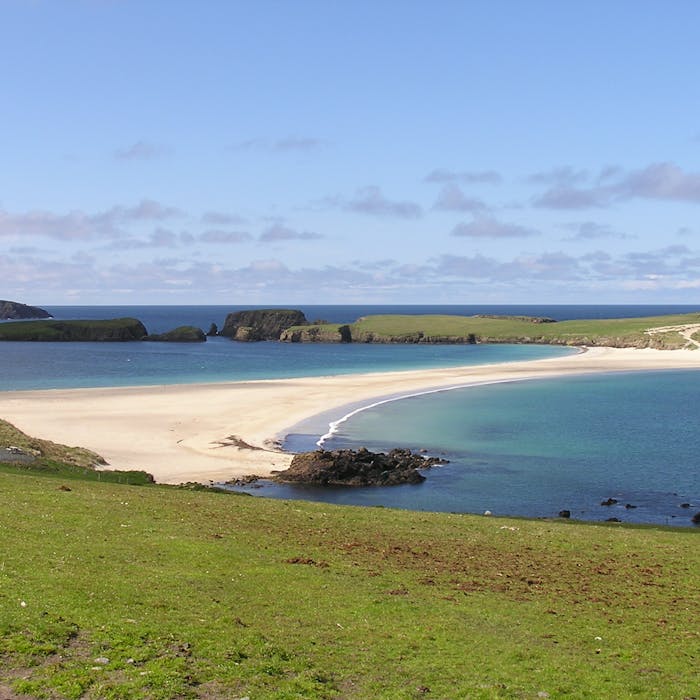
St Ninian's Isle - Shetland's enchanting beach
Far north in Scotland, an enchanting beach links St Ninian's Isle to the mainland, the largest island in the Shetlands. A peaceful place with a forgotten but ancient history, and buried treasure to boot!
St Ninian's Isle is connected by a narrow strip of sand to the Mainland - making it a 'tied island'. This kind of sand causeway is officially known as a tombolo, although the Scottish word is ayre. The tombolo at St Ninian's is the largest in the UK, and is 500 metres long.
During the summer the tombolo is above sea level and accessible to walkers, producing a very unusual and charming beach. During winter, stronger wave action removes sand from the beach so that it is usually covered at high tide, until the sand is returned the following spring. Depending on the definition used, St. Ninian's is thus either an island, or a peninsula, and has an area of about 72 hectares.
The ruins of a 12th-century chapel can still be seen near the end of the tombolo. The dedication is to Shetland's patron saint, Saint Ninian of Galloway, who is also widely venerated on the nearby Orkney Islands.
There is evidence of both Christian and pre-Christian burial at the graveyard on the island.
In 1958, a schoolboy helping an excavation found a hoard of 8th-century silver in the chapel grounds under a stone slab in a wooden box. The treasure includes many beautiful silver brooches. It was suspected to have been buried to hide it from, or stolen in, a Viking raid. The silver bowls, jewellery and other pieces are believed to date from approx. 800 AD, and are now on display in the National Museum of Scotland, Edinburgh.
The last family to live on the island, that of Henry Leask, left the island in 1796.
Further reading
Links to external websites are not maintained by Bite Sized Britain. They are provided to give users access to additional information. Bite Sized Britain is not responsible for the content of these external websites.
